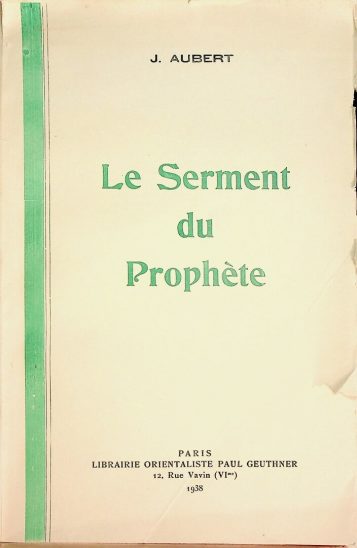Le Serment du Prophète.
Aubert, Jeanne.
Synopsis
On the significance of a document purporting to be a promise of protection made to the Christians by Muḣammad. Including a photograph and a translation of the document.
The Achtiname (Oath) of Muhammad, also known as the Covenant or (Holy) Testament of the Prophet Muhammad, is a charter or writ ratified by the Islamic Prophet Muhammad granting protection and other privileges to the Christian monks of Saint Catherine’s Monastery. It is sealed with an imprint representing Muhammad’s hand. Achtiname is a Persian word consisting of two parts: آشتی (Āshtī) meaning Peace and نامه (nāmeh, nama) meaning Book or Letter and آشتینامه (‘the Book of Peace’) is the Persian word for Treaty and Covenant.
According to the monks’ tradition, Muhammad frequented the monastery and had great relationships and discussions with the Sinai fathers. The document claims that the Prophet (570–632) had personally granted by charter in the second year of the Hegira, corresponding to AD 626, the rights and privileges to all Christians “far and near”. It consists of several clauses on such topics as the protection of Christians living under Islamic rule as well as pilgrims on their way to monasteries, freedom of worship and movement, freedom to appoint their own judges and to own and maintain their property, exemption from military service and taxes, and the right to protection in war.
Several certified historical copies are displayed in the library of St Catherine, some of which are witnessed by the judges of Islam to affirm historical authenticity. The monks claims that during the Ottoman conquest of Egypt in 1517, the original document was seized from the monastery by Ottoman soldiers and taken to the palace of Sultan Selim I in Istanbul for safekeeping. A copy was then made to compensate for its loss at the monastery. It also seems that the charter was renewed under the new rulers, as other documents in the archive suggest. Traditions about the tolerance shown towards the monastery were reported in governmental documents issued in Cairo and during the period of Ottoman rule (1517–1798), the Pasha of Egypt annually reaffirmed its protections.






